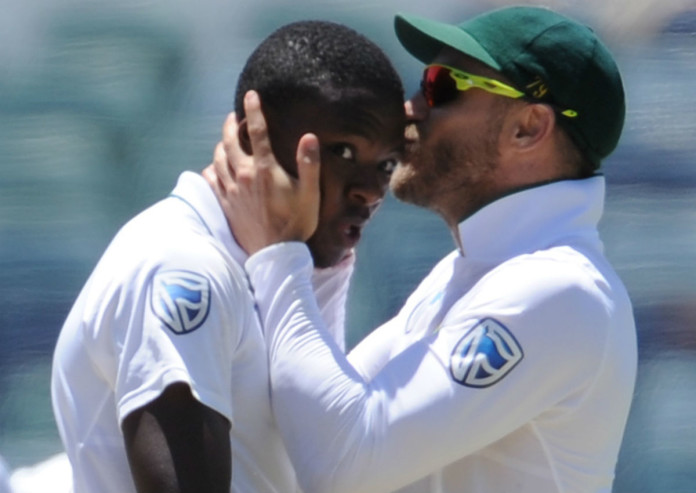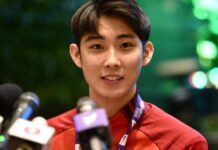It was a year of conflict and achievement in Indian cricket.
Conflict dragged Indian cricket down and into the courts and lawyers threatened to become as important as cricketers.
It was a sordid, unhappy year with neither the Lodha Commission nor the BCCI willing to blink.
That kind of contest is a spectacle best reserved for the cricket ground.
Happily, achievement kept drawing attention towards itself, it replaced a frown with a smile and through the extraordinary performances of two players, ably supported by willing compatriots, took the on-field game to memorable highs.
There was much joy too from the West Indies and as Carlos Brathwaite smote Ben Stokes to distant corners of the field, happiness erupted beyond the Caribbean and into faraway houses where their style of play has many friends.
They just get T20, these West Indians, and they do a better celebration than anyone else.
The women joined in too, and by winning told the world that their game had moved beyond the traditional bastions of Australia, England and New Zealand.
The World T20 was a spectacular tournament, it gave the people what they wanted and closed the debate on whether or not it should be played every two years.
The mighty Australians looked a little less so in 2016.
I have admired their tenacity, their ability to look a situation in the eye from the time I started watching this sport.
But much like they did in India in 2013, they crumbled against Sri Lanka losing all three Tests, sent out the first 15 that caught the eye to South Africa and lost all five one-day internationals and against India, a contest between the two homes of T20 cricket, failed to win a single game either.
There were more Australian fast bowlers strewn around beyond the boundary than within it and there has hardly been a better time in their history to be a middle order batsman.
But cricket itself flourished. Test matches were well attended, and the latest edition of the Big Bash is on the way to becoming a blockbuster.
Australia, though, took the lead in playing day/night Tests and while their climate helps, their thinking did too.
Much to my joy, the pink ball was accepted and people turned up in large numbers to watch a game where dinner was, for over a hundred years, something you had after a match, not during it.
Much like the World T20 in India, the people had spoken. Wherever conditions permit, day/night Tests will henceforth become part of the calendar.
Many bright young stars emerged and told us that we must cherish the great performers of the past but not let us be imprisoned by their feats.
Haseeb Hameed, Babar Azam and young Mehedi Hasan, you wouldn’t have imagined some years ago that these three would represent three different cricketing countries and cultures, made us watch them as did the delightful Kagiso Rabada.
Lokesh Rahul and Jasprit Bumrah took their place at different ends of the batting order for India, Mitch Santner teamed up with Ish Sodhi in Nagpur to outspin India and Mustafizur Rahman announced himself with many wickets and few words in the IPL.
Away in South Africa, Mpumalanga’s Shania Lee Swart made 160 in a T20 game and her 10 colleagues weren’t needed to score a run.
You will never see a scorecard like that again.
An erudite engineer who spins words with the same intent as he did his off-breaks, became the first spinner to become the ICC Cricketer of the Year.
Ravichandran Ashwin was my joint player of the year for constantly raising the bar himself, a quality the genuine champions possess.
He brought back the thrill of watching classical finger spin and you almost waited to see what trick he had up his sleeve next.
Seventy-two wickets in 12 Tests (to go with 612 runs at 43.71 with two centuries) and a place in a crowded pantheon of great spinners appeared for Ashwin in 2016.
On the way, another baby arrived, obediently waiting while her father finished off another series before taking her place in the world.
Ashwin, and the delightful Rangana Herath, the shape of a chef, the guile of a magician and 56 wickets from 9 tests, made finger spin alluring all over again.
Virat Kohli had passion etched on every expression and with every shot held a country’s attention like few had before him.
It was a year he will never forget for every dawn brought runs with it.
The numbers were everywhere, the eyebrows constantly raised and many of us wondered if there was a landmark beyond reach at all.
Out of many, many extraordinary achievements in 2016, two stood out for me.
He made the centuries count in Test cricket, converting them to doubles and putting matches beyond reach of the opposition.
In doing so, he showed a generation younger than his, the many joys of Test cricket.
His average of 75.93 for the year though was to be annihilated.
In T20 cricket, he averaged 89.66 at a strike rate of 147.12 and he topped that with 92.37 in one-day internationals as he consumed run chases without indigestion.
So what was that second dazzling achievement if indeed one could pinpoint it?
It came in the IPL, a tournament where the text book is sometimes wilfully misplaced and balls fly in all directions like pigeons do when disturbed from the nothingness that defines their existence – 700 runs meant you had an outstanding IPL.
Kohli made 973 in 16 innings at 81.08 and a strike rate of 152.03.
You would have thought his bat was swung around like Jadeja’s is after a landmark.
Far from it. Kohli played the most wonderful orthodox shots, hardly ever losing his shape while hitting a cricket ball and redefined what could be achieved in T20 cricket.
My list is not done though.
For that I must take you to Perth, Australia, and to a Test match played in early November between South Africa and Australia.
The visitors come from a land in the throes of change and must constantly make peace with racial differences to move ahead together.
It is not easy as we saw during the World Cup in 2015 but they manage it.
The quotas in cricket were deemed regressive but politics so often over-rides sport.
Having to play men of colour (an appalling description that apartheid has bequeathed) was seen as a hindrance to sporting achievement.
But something remarkable happened over that week in Perth.
After they had made but 242, they saw Australia sail to 158-0 whereupon the mighty Dale Steyn got a wicket and soon thereafter left the ground never to return again in the series.
Things couldn’t be stacked more against the South Africans.
But life had a twist in store. Australia collapsed to 244, South Africa declared at 540-8 and proceeded to bowl the home side out for 361 to make it a great win.
So why have I spent so many words on a distant Test match?
Because after Steyn had to leave with a fractured right shoulder, the next 19 wickets were taken, dare I say it again, by men of colour, not one of whom would have played for South Africa a mere 25 years ago and a bit earlier.
Vernon Philander took 4-56 and 1-55, Rabada took 2-78 and 5-92, Keshav Maharaj had 3-56 and 1-94, JP Duminy followed up with 141 runs and 1-51 and even little Temba Bavuma, who had scored a fine half century in the first innings, took 1-29.
For telling me what is possible beyond the limitations in the mind, that was my event of the year.
tabla@sph.com.sg

Get a copy of tabla! for more stories.







